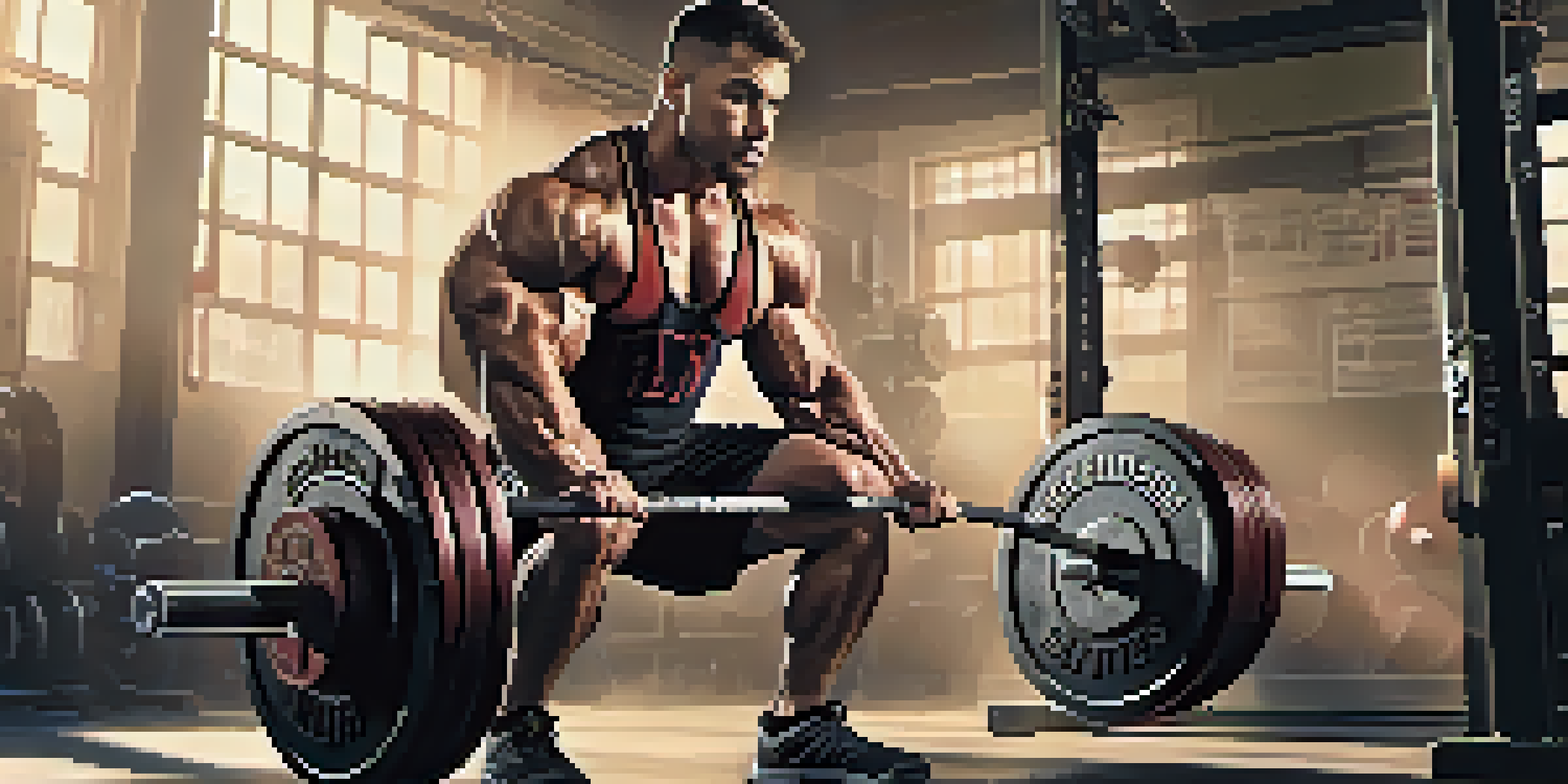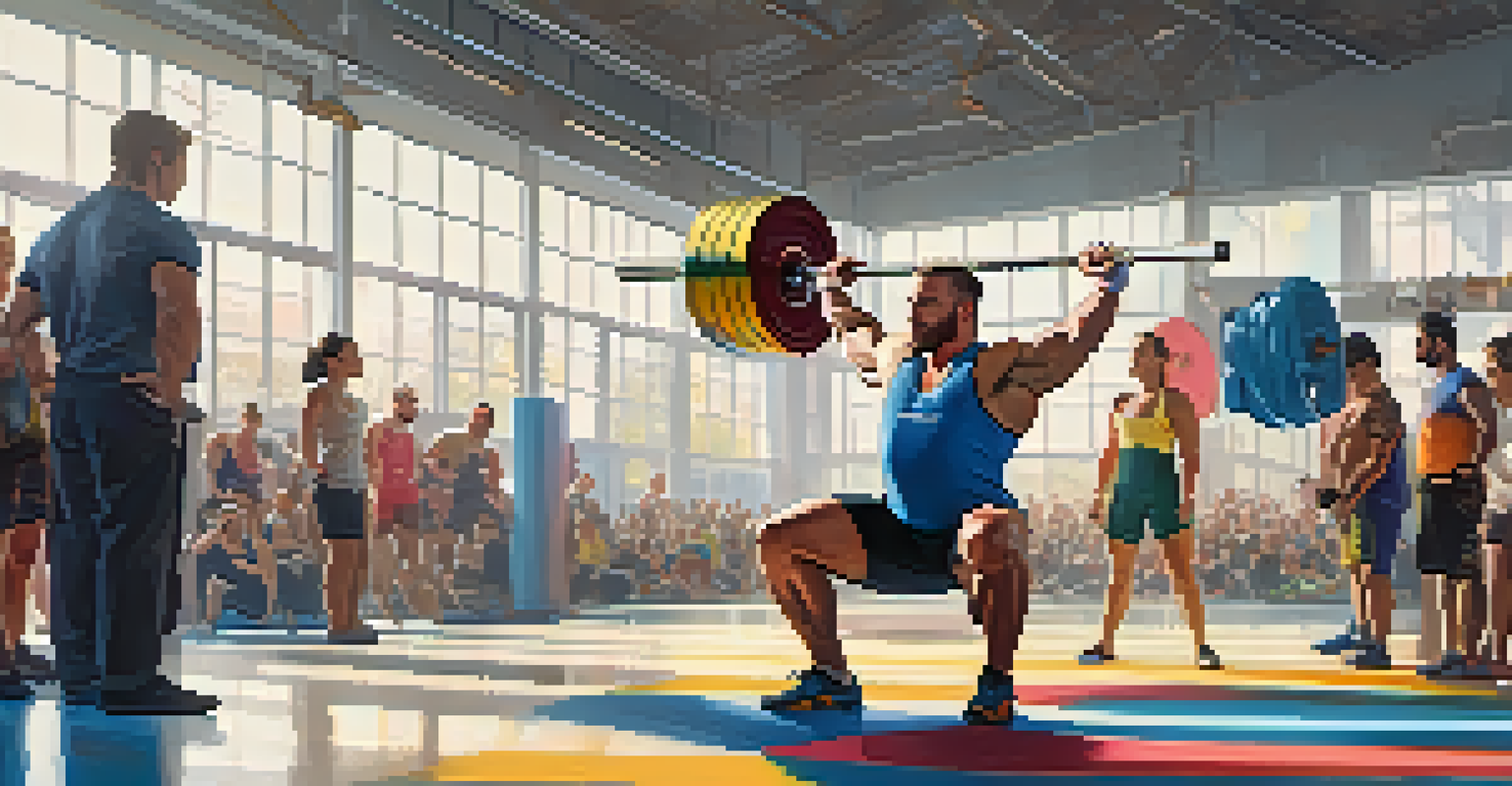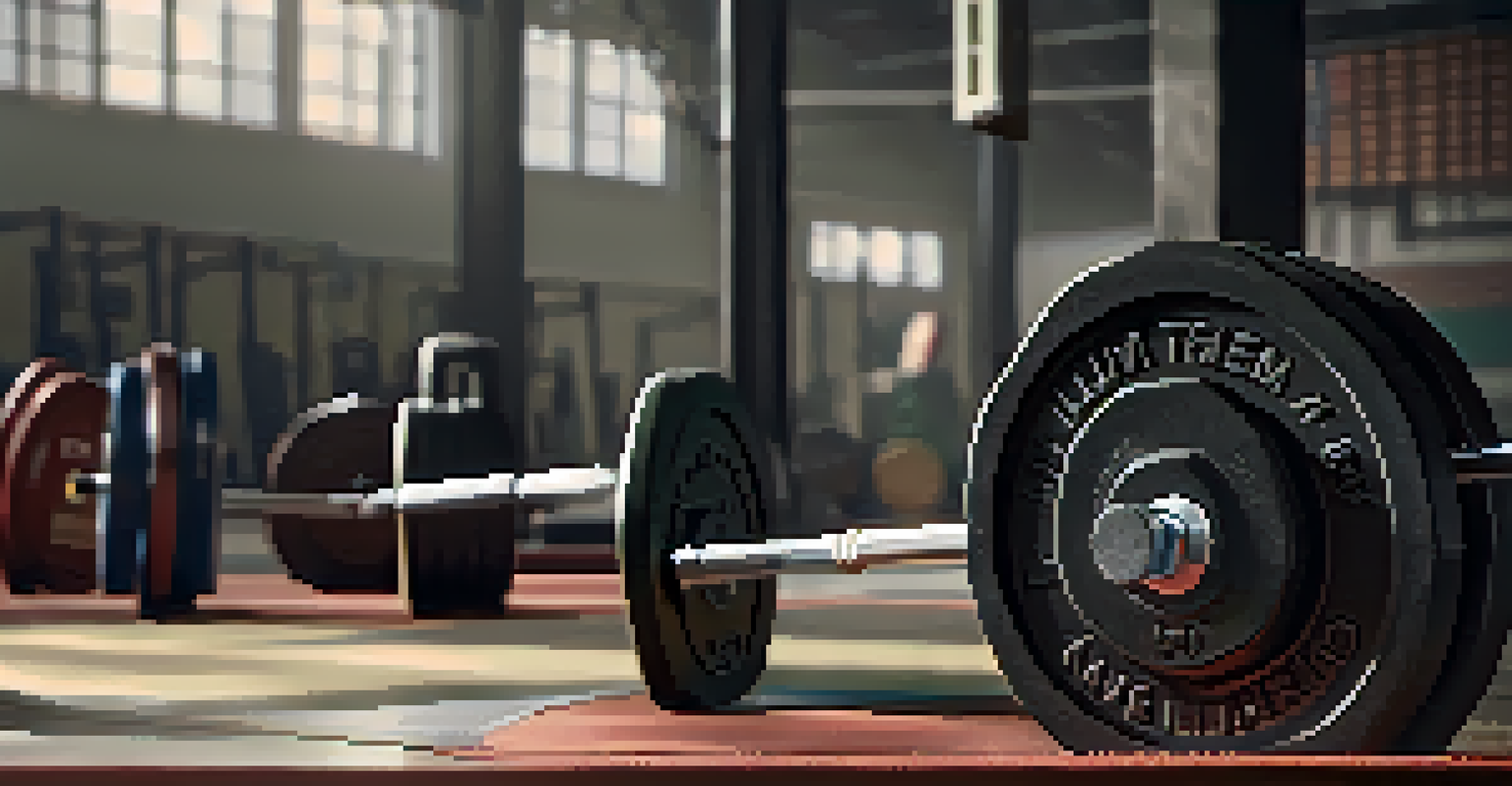Powerlifting vs Olympic Lifting: A Comprehensive Overview

Understanding Powerlifting: The Basics Explained
Powerlifting is a strength sport focused on three main lifts: the squat, bench press, and deadlift. These lifts are designed to test an individual’s maximum strength in each movement. Unlike bodybuilding, where the emphasis is on aesthetics, powerlifting is all about raw power and performance.
Strength does not come from physical capacity. It comes from an indomitable will.
In powerlifting competitions, lifters perform each of the three lifts, trying to lift the heaviest weight possible for a single repetition. Your total score is the sum of your best lifts in each category, making it a straightforward measure of strength. The sport is governed by strict rules, ensuring fair play and consistency in performances.
One of the appealing aspects of powerlifting is that it’s accessible to everyone, from beginners to seasoned athletes. With the right training and technique, anyone can participate, making it a popular choice for those looking to improve their strength and fitness.
Olympic Lifting: A Dynamic Approach to Strength
Olympic lifting, often referred to as weightlifting, includes two main lifts: the snatch and the clean and jerk. These lifts are not just about lifting heavy weights; they require a unique blend of strength, speed, and technique. The dynamic nature of these lifts makes them visually impressive and highly technical.

In Olympic weightlifting competitions, athletes aim to lift the heaviest weight possible in both the snatch and clean and jerk, which are performed in quick succession. The competition format encourages not only maximum strength but also explosive power and agility. This aspect makes it attractive for athletes from various sports looking to enhance their overall performance.
Powerlifting: Strength Over Aesthetics
Powerlifting focuses on maximal strength through three main lifts, emphasizing performance rather than appearance.
A significant benefit of Olympic lifting is its functional application. The movements mimic everyday actions, promoting coordination and balance, which can translate well into other physical activities. This makes it appealing for athletes and fitness enthusiasts alike.
Key Differences: Powerlifting vs Olympic Lifting
While both powerlifting and Olympic lifting focus on strength, the lifts themselves are fundamentally different. Powerlifting emphasizes maximal strength in three specific lifts, while Olympic lifting focuses on dynamic, explosive movements. This difference leads to distinct training methodologies and physical adaptations.
The only way to prove that you are a good sport is to lose.
Another key difference lies in the training styles. Powerlifting often incorporates heavy lifting with lower repetitions, focusing on building strength over time. In contrast, Olympic lifters train for speed and technique, often doing more repetitions with lighter weights to enhance their explosive power.
Lastly, the competition formats differ significantly. Powerlifting competitions assess the best lift in each of the three categories, while Olympic lifting competitions require athletes to perform two different lifts in succession. This distinction not only shapes the training approach but also influences the overall experience of the athlete.
Training Techniques in Powerlifting
Powerlifting training primarily revolves around the three main lifts, with a strong emphasis on technique, strength, and consistency. Athletes often use a variety of training methods, including progressive overload, where weights are gradually increased to continually challenge the muscles. This approach ensures steady progress and reduces the risk of plateauing.
Lifters also incorporate accessory exercises that target muscle groups used in the main lifts, such as deadlifts or variations of squats. These exercises help to build strength in specific areas and improve overall performance. Additionally, many powerlifters focus on their nutrition and recovery strategies to support their training goals.
Olympic Lifting: Speed and Technique
Olympic lifting combines explosive power with technical skill, featuring the snatch and clean and jerk as its core lifts.
One popular training method among powerlifters is the use of periodization, which involves cycling through different phases of training. This allows for focused improvements in strength, technique, and recovery, ensuring athletes are at their peak performance during competitions.
Training Techniques in Olympic Lifting
Training for Olympic lifting is unique, as it requires a combination of strength, speed, and impeccable technique. Athletes spend considerable time perfecting their form through drills and lighter weights before moving on to heavier lifts. This focus on technique is crucial, as even minor mistakes can lead to significant performance issues or injuries.
In addition to the snatch and clean and jerk, Olympic lifters incorporate various accessory lifts, such as front squats, overhead squats, and pulls. These exercises help build the strength and mobility necessary for executing the main lifts effectively. Flexibility training is also a critical component, as it enhances movement efficiency.
Olympic lifters often use a variety of training methodologies, like the use of complexes, which combine multiple lifts in one session. This approach develops both strength and explosiveness while keeping workouts dynamic and engaging. Overall, the training is as much about mental preparation as it is about physical conditioning.
Benefits of Powerlifting: More Than Just Strength
Powerlifting offers numerous benefits that extend beyond simply building strength. Firstly, it can significantly improve bone density, which is crucial for long-term health, especially as we age. Regular heavy lifting stimulates bone growth, reducing the risk of osteoporosis.
Moreover, powerlifting fosters a strong sense of community and camaraderie among lifters. Many find motivation and encouragement in training with others who share similar goals, creating lasting friendships. This supportive environment can be incredibly beneficial for mental well-being.
Unique Benefits of Both Disciplines
Both powerlifting and Olympic lifting offer significant benefits, including improved bone density, athletic performance, and mental toughness.
Lastly, powerlifting is an excellent way to boost confidence. As athletes see their strength increase and achieve personal records, it fosters a sense of accomplishment that can translate into other areas of life. This mental aspect is often just as important as the physical gains.
Benefits of Olympic Lifting: A Holistic Approach
Olympic lifting provides a multitude of benefits that go beyond mere strength development. One notable advantage is the improvement in overall athletic performance, as the explosive nature of the lifts translates well into various sports. Athletes often find that their speed, agility, and coordination improve significantly.
Additionally, Olympic lifting enhances flexibility and mobility, which are essential for executing the lifts effectively. This increased range of motion can benefit everyday activities and other forms of exercise, reducing the risk of injury. It’s a win-win for both performance and functional fitness.

The focus on technique and precision in Olympic lifting also cultivates mental toughness. Lifters learn to overcome challenges and maintain focus, skills that are beneficial both in and out of the gym. This holistic approach to training makes Olympic lifting appealing to a wide range of individuals.